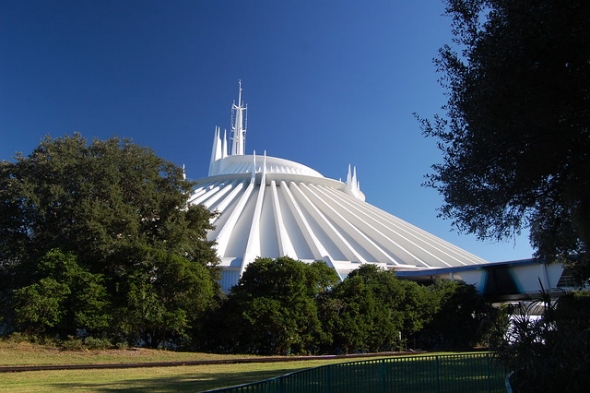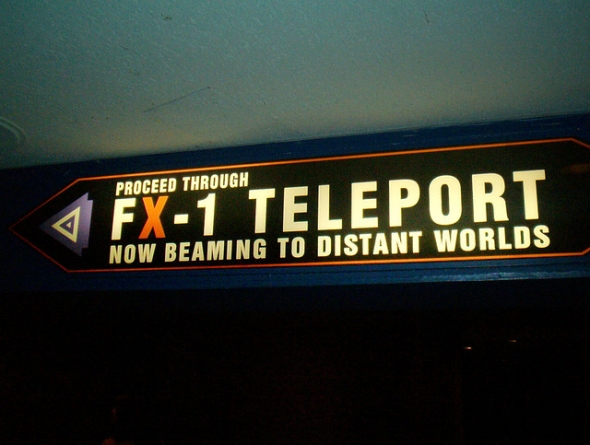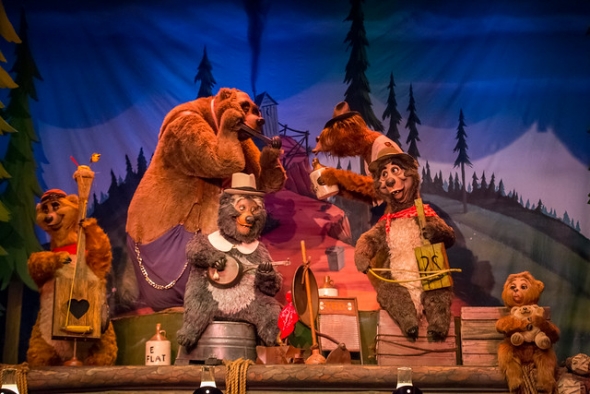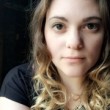Former NASA astronaut Gordon Cooper consulted on the plans for Space Mountain.
Image: Sonja, Flickr (license)
The concept of ‘Tomorrowland’ has always presented difficult challenges for Disney’s Imagineering department. From its inception at Disneyland in 1955 to its various permutations in overseas parks (like Disneyland Paris’ Discoveryland), the land has struggled to retain a unified theme from decade to decade. It has played host to corporate-sponsored showcases and exhibits, 360-degree films, outer space travel simulations, alien rampages, and much, much more.
By the 1970s, it was clear that Tomorrowland needed a singular E-ticket attraction around which Disney could theme the rest of the area. They eventually settled on Space Mountain, a computer-controlled roller coaster that had been originally slated for Disneyland in the mid-1960s. Walt’s initial vision for the coaster required it to be fully indoors and fully in the dark, so that he could better control guests’ perception of being in outer space.
It was easy enough to dream up an attraction set in a solar field, but as with everything Disney did, they wanted the ride to feel as accurate as possible. To that end, they turned to Vice President of Research and Development for EPCOT and former NASA astronaut Gordon Cooper as they tried to figure out how best to convey the rush of entering space, orbiting satellites, and whizzing by faraway galaxies and nebulae.
Image: Sam Howzit, Flickr (license)
Cooper was uniquely suited to explain the rigors of space travel. In 1963, a full decade before he joined Disney’s team, he headed the final U.S. Mercury mission and became the first U.S.-born astronaut to spend a full 24-hour day in space—alone. Two years later, he served as the command pilot during the third leg of Project Gemini, a failed lunar mission that resulted in Cooper (and pilot Pete Conrad) orbiting the Earth for nearly eight straight days.
Of course, a “flight” around Space Mountain is considerably shorter—it clocks in around two-and-a-half minutes, with the rocket-themed ride vehicles chugging along at a brisk 35 m.p.h.—but Cooper’s contributions helped the attraction feel much closer to the authentic experience of spinning in space.* (Perhaps it even triggered unpleasant memories of Gemini V; Cooper reportedly felt too dizzy looking at the stars spinning around the spacecraft and covered the windows to block out the view.) As he told People Magazine after Disneyland opened their own version of the ride in 1977: “Space Mountain is about as close as you can safely get to actually being in space.”
*Conflicting reports describe Cooper consulting on both the Walt Disney World and Disneyland iterations of Space Mountain. It is unclear whether Disney consulted him for one or both projects.
Country Bear Jamboree was first conceived for a ski resort project that was later abandoned.
Image: HarshLight, Flickr (license)
Walt didn’t just have his hands in animation, live-action film, and the development of cutting-edge technology for his existing and planned theme parks and resorts. In 1965, he also a vested interest in ski resorts—well, one ski resort in particular. The ‘Mineral King Ski Resort’ was a $35 million project was planned for the heart of the Mineral King basin in the Sequoia National Forest. The self-contained, Alpine-themed village would have featured 14 year-round ski lifts, an ice-skating rink, restaurants, retail outlets, and hotels, a heliport, a conference center, a public transportation system (like Walt’s EPCOT, cars would not have been permitted in the main resort area), and, of all things, a chapel.
Plans for the resort never came to fruition—development was halted by the lack of viable roads through the park, Walt’s untimely death, and environmental concerns, among other obstacles—but at least in one way, the Mineral King Ski Resort’s loss was the Magic Kingdom’s gain. Before the project ultimately shuttered, Imagineer Marc Davis was working on the concept for a live Audio-Animatronic show at one of the restaurants. Similar to Walt’s unrealized vision for the Enchanted Tiki Room, animatronic animals would have mounted a musical revue to entertain diners—only instead of sharp-witted cockatoos, this show planned to feature an entire band of musically-gifted bears.
It was too good an idea to let go to waste. The revue was soon refitted for the Magic Kingdom’s Frontierland, where it became one of two exclusive-to-Walt-Disney-World attractions to debut with the park in 1971. No longer a dinner show at the Bear Band Restaurant, the 15-minute performance allowed guests to fully appreciate the coordinated talents of 18 animatronic bears, each patterned after a native Floridian species—albeit the kind that could also spout wisecracks and croon a tasteful country-western song or two.




Add new comment